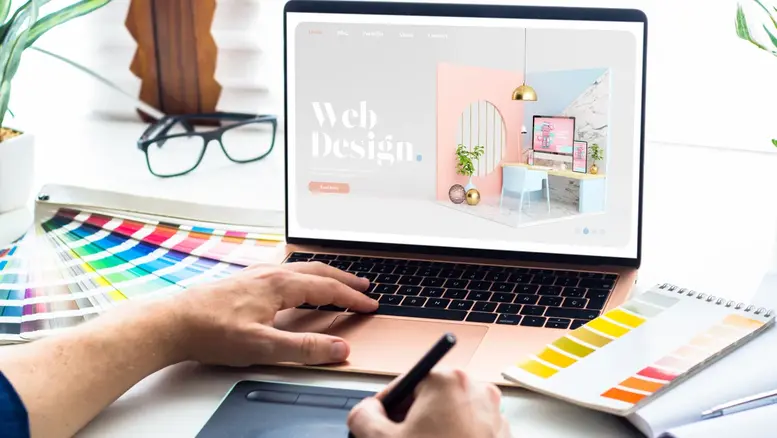A website without a style guide is like a band with no rhythm. Chaotic. Clashing. Confusing. A web style guide is the silent conductor behind the scenes, making sure every element hums in harmony. From colours to typefaces, from spacing to voice, it gives your website a pulse. It’s more than a rulebook. It’s the DNA of your digital identity.
So, in this guide, we will break down the art of creating a website style guide—bit by bit, colour by colour, word by word. Whether you’re crafting a brand-new website or rescuing a disorderly one, this is your blueprint to build structure with style. It will do wonders for your web design in Melbourne.
What Is a Website Style Guide?
Think of a website style guide as your digital constitution. It sets the rules. It keeps everything consistent. It tells designers, developers, and content writers how to speak your brand language. It includes colours, typography, imagery, layout structure, iconography, voice tone, and even button styles. It’s the one source of truth. No more guesswork. Just clean, clear branding.
Why Bother With a Style Guide?
Inconsistency kills credibility. Your visitors might not consciously notice that your headings change size across pages or that your buttons are different shades of blue. But subconsciously, it creates doubt. It feels messy. Sloppy.
A style guide solves this. It builds trust. It makes your brand feel reliable. Plus, it saves time. Designers don’t need to make decisions from scratch. Writers don’t have to guess your tone. Everyone sings from the same song sheet.
Step 1: Define Your Brand Identity
Before you build the style, you need to understand the soul of the brand. Ask the big questions. Who are you? What do you stand for? How do you want people to feel when they visit your site? Are you bold and rebellious? Are you calm and professional? Are you quirky and fun?
Your style guide will reflect these traits.
Start by jotting down your brand personality in three words. For example: friendly, modern, confident. These will shape every visual and written decision you make.
Step 2: Choose Your Colour Palette
Colour is emotion in disguise. It speaks before words appear. It creates a mood instantly.
Limit your palette. Pick one primary colour. Then, add secondary and accent colours. Usually, three to five colours do the trick. Define each colour with its HEX, RGB, and CMYK values. Consistency across web and print matters.
Also, plan for accessibility. Make sure your colour combinations pass contrast checks. Your style should never be excluded.
Step 3: Nail Your Typography
Fonts are not just letters. They are attitude. They whisper sophistication. They shout rebellion. They murmur trust.
Pick one or two typefaces. No more. Your primary font is for body text. Your secondary is for headings. Then, maybe a third for accent or callouts—if you must.
Include sizes. Set clear rules for H1, H2, H3, body, captions, and buttons. Define line spacing, letter spacing, and paragraph spacing. A 16px base font is readable.
Also, specify font weights. Light? Regular? Bold? Give each a role. Typography must feel like a choreographed dance.
Step 4: Define Imagery Style
A picture speaks a thousand tones. That’s right—*tones*. Images carry your brand voice.
Do you use clean, minimal photography? Do you prefer illustrations? Abstract patterns? Vintage filters? Define your style clearly.
Mention image orientation (landscape or portrait). Mention filters. Mention preferred subject matter. If your site is for a bakery, say no to stock images of boardrooms. Be clear. Be strict.
Include rules for icons, too. Outline whether they should be outlined, filled, coloured, or monochrome. Icons speak volumes in small spaces. They deserve attention.
Step 5: Create Layout Rules
Structure matters. People don’t just look at your website—they navigate it. So, guide them.
- Define grid systems, maybe a 12-column grid.
- Keep it responsive. Mobile first.
- Specify header size and footer depth.
- Specify padding, margins, and space between elements. These details prevent design chaos.
Plus, include button styles. Rounded or square? Hover effects? Shadow or flat? Include examples for primary, secondary, and disabled states.
Also, define form fields. Input boxes. Dropdowns. Checkboxes. All should follow the same visual rhythm. Uniformity wins.
Step 6: Set Voice and Tone Guidelines
Now we switch gears from visual to verbal. Your voice is your personality in text form. Your tone shifts depending on the situation. Define both.
- Voice could be casual, technical, upbeat, or serious. Whatever you choose, stick to it.
- Tone adjusts. Light-hearted in blog posts, professional in legal pages, and warm in contact forms.
- Provide writing dos and don’ts. Say “You” instead of “The user.”
- Avoid jargon unless you’re speaking to experts.
- Keep sentences short. Keep paragraphs snappy.
- Include punctuation preferences. Oxford comma or not? Em dashes or en dashes? Capitalisation for headlines? Nail these details.
Step 7: Include Logo Usage Rules
Your logo is your visual signature. Don’t let it get disrespected. Also, forbid ugly uses. No colour swaps. No odd shadows. No tilting. Be ruthless in your guidelines. Protect your logo like a royal seal.
Show how much space to leave around it. Define minimum sizes. Provide correct background combinations. Your logo should always be legible. Always majestic. Never pixelated. Never stretched.
Step 8: Add Interactive Elements
Websites live and breathe. They are not static posters. Define how they respond.
- List animation styles. Slide? Fade? Pop? Keep them subtle.
- Define hover effects. Buttons can glow, darken, lift—but not all at once. Smooth transitions show class.
- Include scroll behaviour. Sticky headers? Scroll-to-top buttons? Lazy loading for images? Detail it all.
If you have modals or pop-ups, state their animation, trigger, and style. No design detail should feel random.
Conclusion
A website style guide may sound like a designer’s luxury. It’s not. It’s a business necessity. It builds trust and consistency. It also makes collaboration easier. More importantly, it scales your brand without breaking your identity.
So take the time and craft it carefully. If you need help, consider contacting Make My Website. It’s one of the best agencies for web design in Melbourne.
Read More: Asia Carrera now



